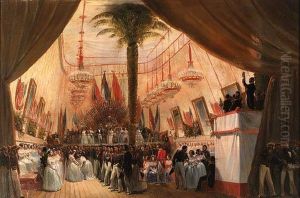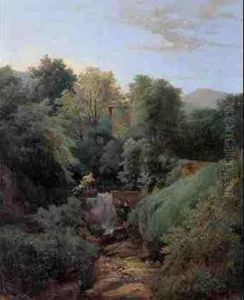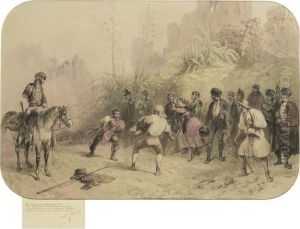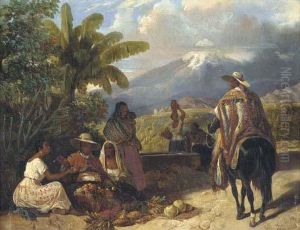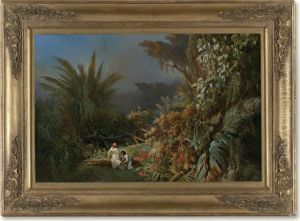Henri Pierre L. Blanchard Paintings
Henri Pierre L. Blanchard, born in 1772 and deceased in 1855, was a French artist known primarily for his mastery in the art of engraving. His life spanned a period of significant political and social change in France, from the ancien régime through the French Revolution, the Napoleonic era, and into the reign of Louis-Philippe. Despite the turbulent times, Blanchard managed to focus on his art, contributing significantly to the world of printmaking and engraving.
Blanchard's early life is somewhat obscure, as detailed records about his personal life and training are limited. However, it is known that he was active in the artistic circles of Paris and possibly received formal training under some of the prominent engravers of his time. The technical expertise evident in his works suggests a comprehensive apprenticeship, which was the norm for artists in his field during the 18th and early 19th centuries.
Throughout his career, Henri Pierre L. Blanchard specialized in landscape engravings and was celebrated for his ability to capture the delicate interplay of light and shadow, a skill that lent his scenes a lifelike quality rarely seen in engravings of his era. His works often depicted idyllic landscapes, architectural views, and historical scenes, which were popular with both French and international collectors. Blanchard's engravings were not only sought after for their beauty but also for their historical value, as they preserved views of European landscapes and landmarks that have since changed or disappeared.
In addition to his landscapes, Blanchard was known to have produced engravings after paintings by contemporary and earlier masters, thereby contributing to the dissemination of artistic styles and trends. This practice was common among engravers of the time, as it allowed the broader public access to artworks they might not otherwise see, effectively making Blanchard and his peers early influencers in the spread of artistic knowledge.
Despite his contributions to the art of engraving and his moderate success during his lifetime, Henri Pierre L. Blanchard's name is not as widely recognized today as some of his contemporaries. This oversight may be attributed to the sheer volume of artists active in France during this period, many of whom were involved in the more rapidly evolving fields of painting and sculpture. Nevertheless, for those with an interest in the history of printmaking and engraving, Blanchard's work offers a fascinating insight into the aesthetic and technical concerns of early 19th-century French art.
Henri Pierre L. Blanchard's death in 1855 marked the end of an era for the traditional engraver. The advent of photographic processes and other technological advances in art production and reproduction began to eclipse the need for hand-engraved images. However, his legacy survives in the collections of museums and in the portfolios of collectors and connoisseurs, serving as a testament to the skill, dedication, and artistic vision that defined his career.
